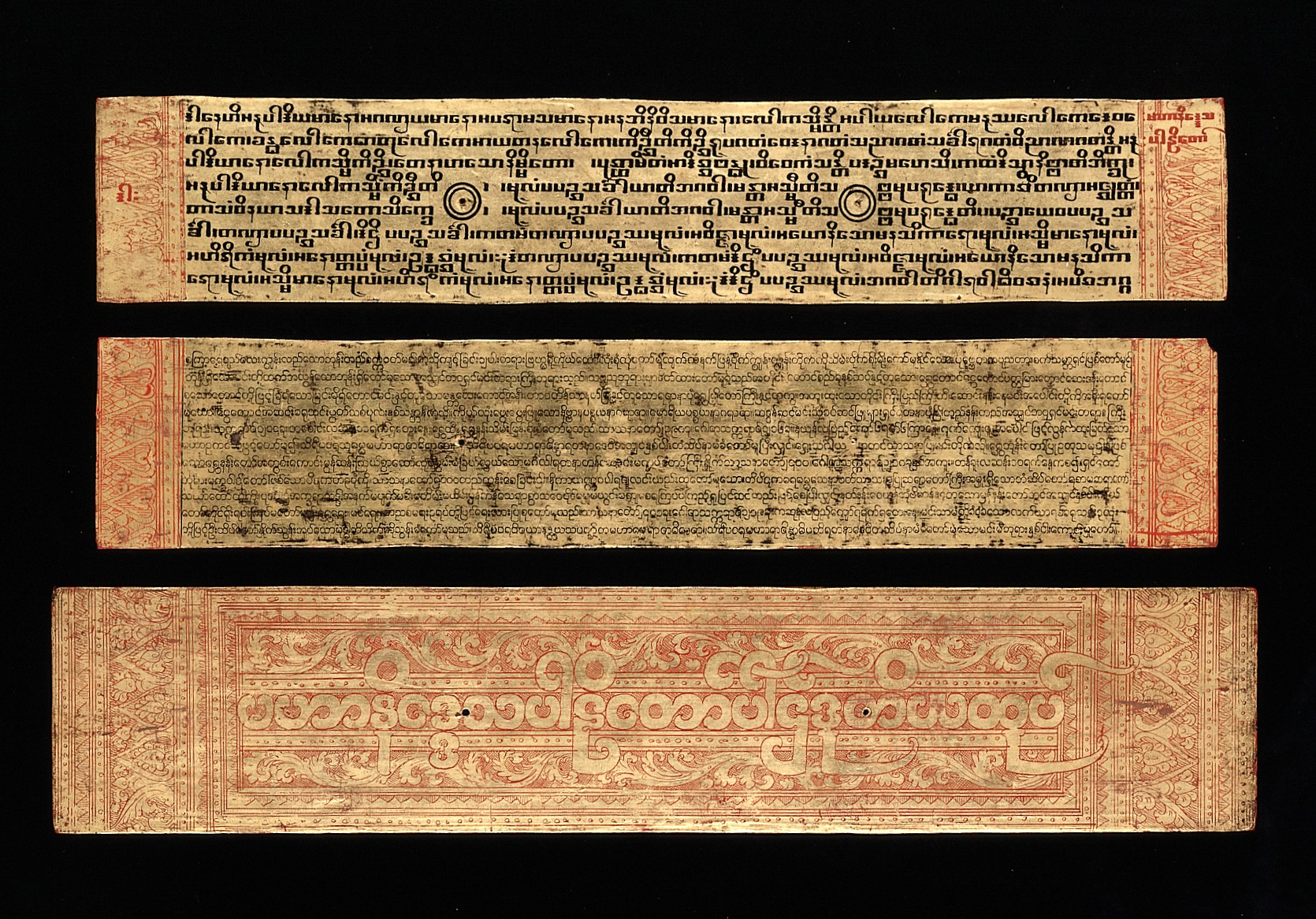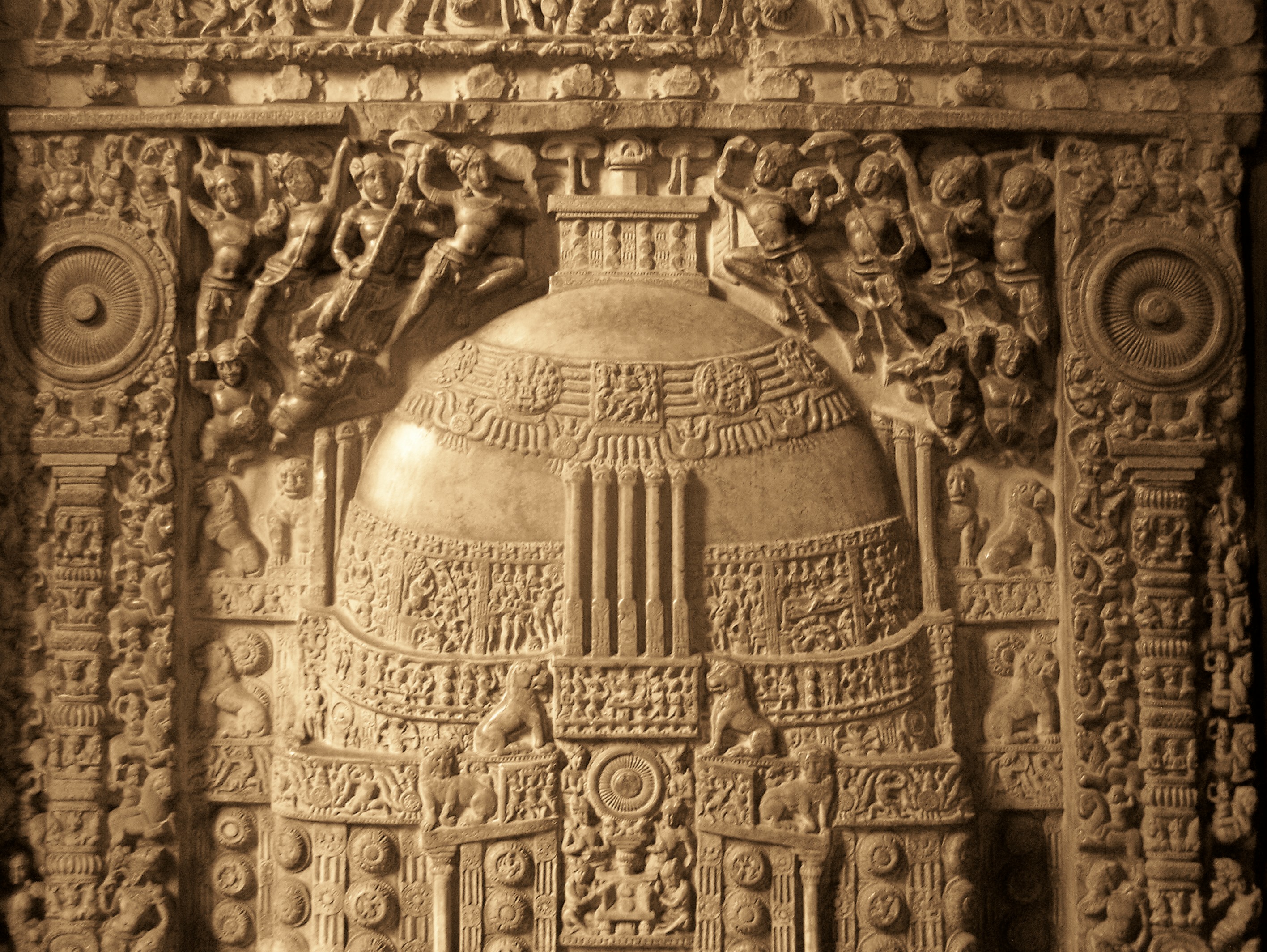|
Svabhāva
Svabhava (, svabhāva; , sabhāva; ; ; ) literally means "own-being" or "own-becoming". It is the intrinsic nature, essential nature or essence of beings. The concept and term ''svabhāva'' are frequently encountered in Hindu and Buddhist traditions such as Advaita Vedanta (e.g. in the '' Avadhūta Gītā''), Mahāyāna Buddhism (e.g. in the ''Ratnagotravibhāga''), Vaishnavism (e.g., the writings of Ramanuja) and Dzogchen (e.g. in the seventeen tantras). In the nondual Advaita Vedānta yoga text, ''Avadhūta Gītā'', Brahman (in the Upanishadic denotation) is the ''svabhāva''. In the Mahāyāna Buddhadharma tradition(s) it is one of a suite of terms employed to denote the Buddha-nature, such as "''gotra''". Hindu philosophy The term first appears in the Shvetashvatara Upanishad, as a possible first cause (''jagatkāraṇa'').Ramkrishna Bhattacharya, ''Svabhāvavada'' and the Cārvāka/Lokāyata: A Historical Overview There also seems to have been an Indian philosophical pos ... [...More Info...] [...Related Items...] OR: [Wikipedia] [Google] [Baidu] |
Vaibhāṣika
Sarvāstivāda-Vaibhāṣika () or simply Vaibhāṣika () is an ancient Buddhist tradition of Abhidharma (scholastic Buddhist philosophy), which was very influential in north India, especially Kashmir.Westerhoff 2018, pp. 60–61. In various texts, they referred to their tradition as ''Yuktavāda'' (the doctrine of logic), and another name for them was ''Hetuvāda''.Dhammajoti (2009) pp. 56, 164. The Vaibhāṣika school was an influential subgroup of the larger Sarvāstivāda school. They were distinguished from other Sarvāstivāda sub-schools like the Sautrāntika and the "Western Masters" of Gandhara and Bactria by their orthodox adherence to the doctrines found in the '' Mahāvibhāṣa,'' from which their name is derived (''Vaibhāṣa'' is a ''vṛddhi'' derivative of ''vibhāṣa,'' meaning "related to the ''vibhāṣa''). Vaibhāṣika thought significantly influenced the Buddhist philosophy of all major Mahayana Buddhist schools of thought and also influenced the later ... [...More Info...] [...Related Items...] OR: [Wikipedia] [Google] [Baidu] |
Abhidharma
The Abhidharma are a collection of Buddhist texts dating from the 3rd century BCE onwards, which contain detailed scholastic presentations of doctrinal material appearing in the canonical Buddhist scriptures and commentaries. It also refers to the scholastic method itself, as well as the field of knowledge that this method is said to study. Bhikkhu Bodhi calls it "an abstract and highly technical systemization of the uddhistdoctrine," which is "simultaneously a philosophy, a psychology and an ethics, all integrated into the framework of a program for liberation." According to Peter Harvey, the Abhidharma method seeks "to avoid the inexactitudes of colloquial conventional language, as is sometimes found in the Suttas, and state everything in psycho-philosophically exact language." In this sense, it is an attempt to best express the Buddhist view of " ultimate reality" (''paramārtha-satya''). There are different types of Abhidharma literature. The early canonical Abhidharma ... [...More Info...] [...Related Items...] OR: [Wikipedia] [Google] [Baidu] |
Varna (Hinduism)
Varna (, ), in the context of Hinduism, refers to a social class within a hierarchical traditional Hindu society. The ideology of varna is epitomized in texts like '' Manusmriti'', which describes and ranks four varnas, and prescribes their occupations, requirements and duties, or '' Dharma''. *Brahmins: Vedic scholars, priests or teachers. * Kshatriyas: Rulers, administrators or warriors. * Vaishyas: Agriculturalists, farmers or merchants. * Shudras: Artisans, labourers or servants. This quadruple division is a form of social stratification, quite different from the more nuanced system of '' Jātis'', which correspond to the term "caste". The varna system is discussed in Hindu texts, and understood as idealised human callings. The concept is generally traced back to the '' Purusha Sukta'' verse of the Rigveda. In the post- Vedic period, the varna division is described in the '' Mahabharata,'' ''Puranas'' and in the '' Dharmashastra literatures''. The commentary on the Varna ... [...More Info...] [...Related Items...] OR: [Wikipedia] [Google] [Baidu] |
Theravāda Abhidhamma
The Theravada Abhidhamma tradition, also known as the Abhidhamma Method, refers to a scholastic systematization of the Theravāda school's understanding of the highest Buddhist teachings ( Abhidhamma). These teachings are traditionally believed to have been taught by the Buddha, though modern scholars date the texts of the ''Abhidhamma Piṭaka'' to the 3rd century BCE. Theravāda traditionally sees itself as the ''vibhajjavāda'' ("the teaching of analysis"), which reflects the analytical (''vibhajjati'') method used by the Buddha and early Buddhists to investigate the nature of the person and other phenomena. According to Bhikkhu Bodhi, a modern Theravāda scholar, the Abhidhamma is "simultaneously a philosophy, a psychology and an ethics, all integrated into the framework of a program for liberation."Bodhi (2000), p. 3. There are different textual layers of Abhidhamma literature. The earliest Abhidhamma works are found in the Pali Canon. Then there are exegetical works whi ... [...More Info...] [...Related Items...] OR: [Wikipedia] [Google] [Baidu] |
Dharma
Dharma (; , ) is a key concept in various Indian religions. The term ''dharma'' does not have a single, clear Untranslatability, translation and conveys a multifaceted idea. Etymologically, it comes from the Sanskrit ''dhr-'', meaning ''to hold'' or ''to support'', thus referring to law that sustains things—from one's life to society, and to the Universe at large. In its most commonly used sense, dharma refers to an individual's moral responsibilities or duties; the dharma of a farmer differs from the dharma of a soldier, thus making the concept of dharma a varying dynamic. As with the other components of the Puruṣārtha, the concept of ''dharma'' is pan-Indian. The antonym of dharma is ''adharma''. In Hinduism, ''dharma'' denotes behaviour that is considered to be in accord with ''Ṛta''—the "order and custom" that makes life and universe possible. This includes duties, rights, laws, conduct, virtues and "right way of living" according to the stage of life or social posi ... [...More Info...] [...Related Items...] OR: [Wikipedia] [Google] [Baidu] |
Pratītyasamutpāda
''Pratītyasamutpāda'' (Sanskrit: प्रतीत्यसमुत्पाद, Pāli: ''paṭiccasamuppāda''), commonly translated as dependent origination, or dependent arising, is a key doctrine in Buddhism shared by all schools of Buddhism. It states that all dharmas (phenomena) arise in dependence upon other dharmas: "if this exists, that exists; if this ceases to exist, that also ceases to exist". The basic principle is that all things (dharmas, phenomena, principles) arise in dependence upon other things. The doctrine includes depictions of the arising of suffering (''anuloma-paṭiccasamuppāda'', "with the grain", forward conditionality) and depictions of how the chain can be reversed (''paṭiloma-paṭiccasamuppāda'', "against the grain", reverse conditionality).Fuller, Paul (2004). ''The Notion of Ditthi in Theravada Buddhism: The Point of View.'' p. 65. Routledge.Harvey, Peter. ''The Conditioned Co-arising of Mental and Bodily Processes within Life and Betw ... [...More Info...] [...Related Items...] OR: [Wikipedia] [Google] [Baidu] |
Milinda Panha
The ''Milindapañha'' () is a Buddhist text which dates from sometime between 100 BC and 200 AD. It purports to record a dialogue between the Indian Buddhist sage Nāgasena, and the 2nd century BC Indo-Greek king Menander I (Pali: ''Milinda''). The ''Milindapañhā'' is regarded as canonical in Burmese Buddhism, included as part of the book of ''Khuddaka Nikāya''. An abridged version is included as part of Chinese Mahāyāna translations of the canon. The ''Milindapañha'' is not regarded as canonical by Thai or Sri Lankan Buddhism, however, despite the surviving Theravāda text being in Sinhalese script. The Chinese text titled the Monk Nāgasena Sutra corresponds to the first three chapters of the Milindapañha. It was translated sometime during the Eastern Jin dynasty (317–420). History It is generally accepted by scholars that the work is composite, with additions made over some time. In support of this, it is noted that the Chinese versions of the work are sub ... [...More Info...] [...Related Items...] OR: [Wikipedia] [Google] [Baidu] |
Pāli Canon
The Pāḷi Canon is the standard collection of scriptures in the Theravada Buddhism, Buddhist tradition, as preserved in the Pāli language. It is the most complete extant Early Buddhist texts, early Buddhist canon. It derives mainly from the Tamrashatiya school. According to Buddhist tradition, during the First Buddhist Council, three months after the parinibbana of Gautama Buddha in Rajgir, Ananda recited the Sutta Piṭaka, Sutta Pitaka, and Upali recited the Vinaya Piṭaka, Vinaya Pitaka. The Arhats present accepted the recitations, and henceforth, the teachings were preserved orally by the Sangha. The Tipitaka that was transmitted to Sri Lanka during the reign of King Asoka was initially preserved orally and later written down on palm leaves during the Fourth Buddhist Council in 29 BC, approximately 454 years after the death of Gautama Buddha. The claim that the texts were "spoken by the Buddha" is meant in this non-literal sense. The existence of the Bhāṇaka tradi ... [...More Info...] [...Related Items...] OR: [Wikipedia] [Google] [Baidu] |
Śrīmālādevī Siṃhanāda Sūtra
The ''Śrīmālādevī Siṃhanāda Sūtra'' (, '' of Queen Śrīmālā'') is one of the main early Mahāyāna Buddhist texts belonging to the Tathāgatagarbha sūtras that teaches the doctrines of Buddha-nature and "One Vehicle" through the words of the Indian queen Śrīmālā. After its composition, this text became the primary scriptural advocate in India for the universal potentiality of Buddhahood. History Brian Edward Brown, a specialist in Buddha-nature doctrines, writes that the composition of the ''Śrīmālādevī Siṃhanāda Sūtra'' occurred during the Īkṣvāku Dynasty in the 3rd century CE as a product of the Caitika schools of the Mahāsāṃghikas. Alex Wayman has outlined eleven points of complete agreement between the Mahāsāṃghikas and the ''Śrīmālā'', along with four major arguments for this association. Anthony Barber also associates the earlier development of the '' Tathāgatagarbha Sūtra'' with the Mahāsāṃghikas, and concludes that the M ... [...More Info...] [...Related Items...] OR: [Wikipedia] [Google] [Baidu] |
Mahāyāna Mahāparinirvāṇa Sūtra
The ''Mahāyāna Mahāparinirvāṇa Sūtra'' (Sanskrit; , ; Vietnamese: ''Kinh Đại Bát Niết Bàn'') or ''Nirvana Sutra'' for short, is an influential Mahayana, Mahāyāna Buddhist Sutra, scripture of the Buddha-nature class. The original title of the sutra was ''Mahāparinirvāṇamahāsūtra'' (''Great Scripture of the Great Perfect Nirvāṇa'') and the earliest version of the text was associated with the Mahāsāṃghika-Lokottaravāda school.Baums, StefanReview of Habata, ''Die zentralasiatischen Sanskrit‐Fragmente des Mahāparinirvāṇa‐mahāsūtra''. Indo‐Iranian Journal 58: 71–78./ref> The sutra was particularly important for the development of East Asian Buddhism. The ''Nirvana sutra'' uses the backdrop of the Buddha's Parinirvana, final nirvana to discuss the nature of the The Buddha, Buddha, who is described in this sutra as undying and eternal, without beginning or end. The text also discusses the associated doctrine of buddha-nature (Buddha-nature, tat ... [...More Info...] [...Related Items...] OR: [Wikipedia] [Google] [Baidu] |
Tathāgatagarbha Sūtras
The Tathāgatagarbha sūtras are a group of Mahayana sutras that present the concept of the "womb" or "embryo" (''garbha'') of the tathāgata, the buddha. Every sentient being has the possibility to attain Buddhahood because of the '' tathāgatagarbha''. This concept originated in India but was a major influence in the development of East Asian Buddhism, where it was equated with the concept of ''Buddhadhātu'', "buddha-element" or "buddha-nature". The Tathāgatagarbha sūtras include the '' Tathāgatagarbha Sūtra'', '' Śrīmālādevī Siṃhanāda Sūtra'', '' Mahāyāna Mahāparinirvāṇa Sūtra'' and the '' Aṅgulimālīya Sūtra''. Related ideas are in found in the '' Laṅkāvatāra Sūtra'' and '' Avataṃsaka Sūtra''. Another major text, the '' Awakening of Faith'', was originally composed in China, while the ''Mahāyāna Mahāparinirvāṇa Sūtra'' was considerably extended in China . Comparing the tradition of Tathāgatagarbha sūtras to the Yogachara and Mad ... [...More Info...] [...Related Items...] OR: [Wikipedia] [Google] [Baidu] |







